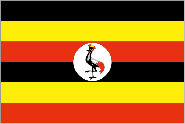United Nations Development Programme (UNDP)
Taxonomy Term List
Advancing Albania’s planning for medium and long-term adaptation through the development of a National Adaptation Planning (NAP) process
This project is designed to help the Government of Albania increase its capacity to address the country’s climate change vulnerabilities by supporting the development of a national plan for climate change adaptation. The support focuses on 1) strengthening the national mandate, strategy and steering mechanism for assessing and addressing capacity gaps (particularly in the priority sectors of tourism, urban development, agriculture, transport, and energy); 2) develop a National Adaptation Plan (NAP) Strategy action plan and implementation plan, and 3) develop financing, monitoring and evaluation strategies to ensure that capacities and funding options are institutionalized for the long-term sustainability of adaptation planning beyond the life of the project.
With financing from the Green Climate Fund, the project "Advancing Albania’s planning for medium and long-term adaptation through the development of a National Adaptation Plan (NAP) process" is supporting the Government of Albania to increase its capacity to address the country’s climate change vulnerabilities.
Albania’s primarily rural population is highly vulnerable to the effects of climate change, where extreme rain events frequently result in destructive flooding, while agricultural livelihoods and drinking water supplies are threatened during dry periods. As temperatures rise, climate scenarios predict increased severity and frequency of these extreme wet and dry conditions, along with decreasing annual rainfall. These changes place Albania’s population at risk and pose a threat among others to the hydropower and tourism industries.
To address these vulnerabilities, the Government of Albania launched its NAP process in February 2015, with the support of GIZ and UNDP, through consultations with national stakeholders and a stocktaking exercise. A preliminary roadmap for the NAP implementation was formulated and validated by representatives from the Ministry of Tourism and Environment, as well as stakeholders from the Inter-ministerial Working Group on Climate Change (IMWGCC).
The analytical exercises highlighted the existing weaknesses and demonstrated the prevailing barriers to climate change adaptation (CCA) planning in Albania. The results confirmed that to adequately address climate change vulnerabilities, Albania must overcome information gaps, vulnerability assessments, climate adaptation planning capacity weaknesses, and a lack of awareness of CCA – both at national and sub-national levels. In addition, climate change is not integrated into existing environmental and development policies or their associated budget priorities, and financing appropriations for adaptation are absent.
The underlying challenge lies in the lack of a comprehensive framework for adaptation in Albania. The National Communications provide a preliminary assessment of adaptation priorities, while a national NAP Framework Document was developed as part of the NAP preparation and stocktaking process in 2016. To leverage these preliminary activities towards climate resilience, this readiness effort aims to address the weaknesses and barriers identified in the NAP Framework Document.
In September 2021, Albania submitted its National Adaptation Plan, including a comprehensive financing strategy to the UNFCCC.
The project aims at delivering the following results under the three main outcomes:
- Strengthen legal and institutional framework and mandate for climate change adaptation work at the national level;
- Upgrade stocktaking on climate vulnerabilities, adaptation opportunities and development needs and update vulnerability analyses;
- Address adaptation related capacity gaps at national and subnational levels;
- Establish long-term adaptation capacity development methodologies to ensure ongoing skills development and increased awareness of climate change adaptation;
- Formulate NAP Strategy action plan and the accompanying communications plan;
- Promote CCA integration into existing planning and budgeting and cross-sector coordination;
- Develop NAP implementation plan;
- Establish systems to monitor NAP process and adaptation progress;
- Identify options for securing and scaling up financing for adaptation; develop a financing plan.
Project Updates
After the inception workshop in December 2021, the project, in collaboration with stakeholders, established criteria for selecting up to eight municipalities for climate change adaptation roadmaps and identified priority sectors for analysis. UNDP signed a Memorandum of Understanding with Tirana Polytechnic University and the Institute of Geosciences (IGEO) to foster cooperation.
The project also supported the development of a new legal proposal to update the mission of the IGEO to include CCA, as well as the operational manual for the Interministerial Working Group on Climate Change and a draft reporting format for the National Climate Change Committee (NCCC).
Since 2022, the project team has accelerated project implementation, making significant progress in strengthening the institutional framework and capacities for CCA planning. This involved concluding procurement services to implement activities.
Recent successes include the establishment of the NCCC and the finalization of its Operations Manual, the development of a Monitoring, Reporting, and Verification (MRV) system, and progress on legal acts related to the IGEO. Additionally, work was undertaken on climate and socio-economic data analysis, inventory of adaptation projects, capacity assessment at national and subnational levels, and training programs.
In 2023, various stakeholders were engaged and sensitized on the NAP process. Activities have included refining vulnerability and risk assessments, developing a national database for climate change scenarios and sector vulnerability assessment, compiling a regional climate change scenario report, finalizing the expanded stocktaking report organized by priority sectors, and delivering guidelines and screening tools for gender-sensitive CCA planning.
Outcome 1: Institutional and capacity gaps assessed and addressed.
Outcome 2: NAP Strategy action plan finalized and implementation plan in place.
Outcome 3: Financing strategy and monitoring and evaluation for climate change adaptation in medium – to long-term established


Readiness for the National Adaptation Plan Process in Argentina
The project supported the Government of Argentina in establishing its adaptation planning process. This involved identifying gaps, capacity building, and integrating climate change considerations across national, regional, and local levels. By doing so, the project facilitated the assessment and reduction of vulnerability to the adverse effects of climate change by integrating climate change adaptation into the country's development strategies.
The scope of the project included the preparation of the National Adaptation Plan (NAP) with a regional and multi-sectoral approach. Additionally, it involved the development of a system to monitor and assess adaptation needs and measures under the Law 27250 Minimum Standards for Adaptation and Mitigation to Climate Change (Ley de Presupuestos Mínimos de Adaptación y Mitigación al Cambio Climático). To achieve the proposed outcomes, the project developed a communication strategy on climate change adaptation, carried out a series of studies to identify adaptation options, and supported inter-sectoral and inter-jurisdictional collaboration within the framework of the National Cabinet on Climate Change (NCCC), the Federal Environment Council (COFEMA), and the National System for Comprehensive Risk Management (SINAGIR).
In recent years, Argentina has made decisive progress in planning and implementing measures to adapt to climate change. The National Communications on Climate Change have made valuable contributions, such as providing information, conducting diagnoses, and identifying various information gaps. Within the framework of the National Climate Change Cabinet (NCCC) work, several sectoral initiatives that are directly or indirectly related to climate change adaptation were identified, as well as other information and capacity needs.
This project, funded by the Green Climate Fund (GCF) NAP Readiness Programme, aimed to deepen this work by supporting National Adaptation Plan (NAP) development. This involved facilitating the evaluation and reduction of vulnerability to the adverse effects of climate change by integrating climate change adaptation into Argentina’s development strategies.
The “Readiness for the National Adaptation Plan Process” project was launched in March 2019 to support Argentina’s efforts to assess and reduce climate change vulnerability by integrating climate change adaptation into the country's sustainable development. To achieve this goal, the project aimed to build adaptive capacity and resilience. It sought to integrate climate change adaptation into both new and existing policies, programmes, activities, and development planning processes and strategies across relevant sectors at different levels.
In particular, the project supported the Government of Argentina to:
1) Establish a national process to coordinate adaptation planning at all relevant scales with a medium and long-term perspective.
2) Identify capacity gaps and strengthen capacities for adaptation planning and implementation, integrating adaptation to climate change into national, provincial, and municipal development planning processes.
3) Support the preparation of the NAP with a regional and multi-sectoral approach in the framework of the National Climate Change Cabinet.
4) Establish a system for monitoring and assessing needs and adaptation measures.
5) Design a communication strategy on adaptation to climate change, focusing on the most vulnerable populations and improving climate information services; and
6) Support inter-sectoral and inter-jurisdictional collaboration within the framework of the National Cabinet on Climate Change.
In most of non-Patagonian Argentina, the average temperature has increased up to half a degree between 1960 and 2010, with smaller increases in the center of the country. These changes have already affected natural and human systems, and according to climate projections, impacts will intensify. More frequent and intense rainfall has resulted in more frequent floods, while dry winter periods have become longer in the west and north of the country. This has adversely affected water availability for some populations, increased the risks of grassland fires, and caused livestock stress.
Argentina has committed to addressing climate change adaptation systematically and inclusively through actions and initiatives articulated in its National Adaptation Plan, its 2016 National Determined Contribution (NDC), and it’s second NDC in 2020. The NDCs and further work implemented within the framework of the National Cabinet on Climate Change detected various information gaps and sectoral initiatives that are directly or indirectly linked to climate change adaptation. The project focused on addressing these identified gaps, including establishing a baseline for the country's adaptation situation and initiating a participatory planning process.
The project goals were achieved through three main outcomes and their corresponding activities.
Outcome 1: Institutional strengthening and coordination for the formulation and implementation of the NAP process
Activities under this outcome focused on initiating the NAP process at the national level under the framework of Law 27250 and focused on strengthening governance and institutional coordination for adaptation planning. This involved developing an appropriate strategy and relevant institutional arrangements and support, such as the formalization of the External Advisory Council through consultation with representatives of civil society organizations, political parties, academia, and Indigenous people, and setting clear groundwork. The strategy outlined clear responsibilities for government ministries and departments, specified milestones and expected outputs of the NAP process, and improved coordination and cooperation mechanisms. The approach included participatory and inclusive approaches with Indigenous communities and others to identify climate risks, impacts, and subsequent mitigation strategies. This extended to the participatory formulation of the National Adaptation Plan and support for provinces in developing Subnational Response Plans. Regulatory support further strengthened the National Climate Change Cabinet, which approved the National Plan for Climate Change Adaptation and Mitigation.
Outcome 2: Awareness raising and capacity building
This outcome built capacities to reduce vulnerability to climate change and facilitate the integration of adaptation into development. A comprehensive education, awareness, and communication strategy in climate change adaptation was created encompassing various components, such as education, awareness, access to public information, citizen participation, culture, and international cooperation. A national-level social perception study facilitated the elaboration of this strategy and evaluated audience needs and preferences. Moreover, the Climate Risk Maps Platform (SIMARCC) was updated, functioning as an interactive tool that identifies climate change risks by illustrating communities and ecosystems with the highest socio-environmental vulnerability.
Training was conducted to promote the evaluation, planning, and implementation of adaptation measures. Workshops and training sessions strengthened subnational climate teams, equipping officials at that level with the necessary tools for the development of adaptation plans. Furthermore, private sector engagement was catalyzed through the launch of the Climate Action Agreement with the Private Sector. This aimed to facilitate collaboration between public and private sectors to achieve Argentina’s climate commitments through a platform for exchange and continuous training.
Outcome 3: Baseline definition; formulation of NAPs; implementation, monitoring and reviewing
Outcome 3 involved broad climate risk analyses identifying ‘adaptation deficits.’ This included vulnerability assessments at specific planning levels within the national context that can inform impactful adaptation solutions.Various studies were conducted on topics such as transport supply chains, regional economies, social vulnerability, economic impacts of climate change, health, and cultural heritage to facilitate risk analysis and identify adaptation options. The project also supported the elaboration of provincial adaptation plans by hiring individual consultants to strengthen the provincial climate teams. Risks and needs at the regional level were identified following economic loss estimates and sector-specific damage assessments.
In collaboration with provincial teams and civil society, a multi-criteria analysis tool was developed to prioritize adaptation measures within the NAP. Measures were prioritized based on their contribution to short- and long-term sustainable socioeconomic development, costs, effectiveness, and efficiency at national and subnational levels. Additionally, efforts were made to identify existing adaptation initiatives within national government areas. Moreover, a strategy for implementing and monitoring the NAP, involving priority measures, was developed. This included the design of the NAP monitoring, evaluation, and learning (MEL) system.
Outcome 1: Institutional strengthening and coordination for the formulation and implementation of the NAP process.
Outcome 2: Awareness raising and capacity building.
Outcome 3: Baseline definition, formulation of NAPs, implementation, monitoring and reviewing.


National Adaptation Plan (NAP) support project for adaptation planning and implementation in Azerbaijan
Financed by the Green Climate Fund (GCF) this project will support the Government of Azerbaijan (GoA) to facilitate the development of the National Adaptation Plan (NAP) and improve climate change adaptation (CCA) actions in three priority sectors identified by the Ministry of Ecology and Natural Resources (MENR) of the Republic of Azerbaijan through stakeholder consultations: water, agriculture and coastal areas. The NAP readiness support aims to increase climate resilience and adaptation capacity in three priority sectors through the implementation of actions that will reduce or eliminate barriers for an effective adaptation process at the national and local levels.
The primary beneficiaries from this GCF project include the national government, specifically agencies in the three priority sectors, as well as local communities.
The main objective of the “National Adaptation Plan (NAP) support project for adaptation planning and implementation in Azerbaijan” is to increase capacity on climate resilience and adaptation in three priority sectors to reduce or eliminate barriers for an effective adaptation process at the national and local levels.
The Nationally Determined Contributions (NDC) submitted by Azerbaijan in 2017 highlights the need to “develop relevant adaptation measures for decreasing or minimizing the losses that may occur at national, local and community levels per sector.” The priority sectors were identified as water, agriculture and coastal areas. The expected increase in extreme events on the Caspian Sea coastal areas, such as extremely high waves, strong winds and flooding, make those areas particularly vulnerable to climate change and requires the development of targeted adaptation programmes. The stocktaking exercise in 2017 has identified barriers including: a) Limited access to data including limited data exchange by stakeholders in Azerbaijan; b) Insufficient institutional and technical capacity on climate change adaptation at managerial, expert/practitioners and community levels; c) Limited mainstreaming of adaptation in national, regional, local and sectoral planning, budgeting and regulatory framework; d) Limited institutional coordination; and e) Limited monitoring, evaluation and analysis of past and current programmes on climate change adaptation.
This project aims to address the identified barriers and improve adaptation planning in Azerbaijan focusing on three main areas:
- Improve data availability, access and sharing for decision making. The project will establish mechanisms and data solutions to facilitate increased access and sharing of climate and weather information in Azerbaijan, as well as improve the coordination among institutions.
- Enhance institutional and technical capacity for climate change adaptation in water, agriculture, and coastal areas. Limited institutional and technical capacity hinders not only the mainstreaming of CCA considerations into planning processes, but also the implementation of adaptation actions at the national, regional and local levels. A national gender-sensitive CCA capacity building programme will be developed that addresses the gaps in knowledge and capacity of key stakeholders at all levels: from government decision makers and technical personnel, to local communities and the private sector.
- Increase mainstreaming of CCA considerations into planning at national, regional, local levels in the priority sectors. An Adaptation Working Group (AWG) will be established at the national level, a body that will coordinate the development of a NAP Roadmap document. Further planned activities to advance mainstreaming include the development and application of tools (manuals, guidelines) for the inclusion of CCA considerations into sectoral planning, the improvement of the legal framework for adaptation in priority sectors (water, coastal areas, agriculture), the screening, appraisal and accounting of adaptation in public and private investments and the development and implementation of a monitoring and evaluation (M&E) system for adaptation that is compatible with the Strategic Development Road Maps (SDRM) of Azerbaijan.
Project updates
- Comprehensive assessment of existing and needed climate data and vulnerability studies and supplemental CCA vulnerability studies for priority sectors completed.
- Charter for Adaptation Working Group established to coordinate adaptation planning at the national level.
- Climate Vulnerability Index for the country was developed and is available for use. Gender workplan for the project was developed and is used for the project activities.
- Capacity needs assessment for the development of ‘university specialized diplomas and certificates’ for climate change adaptation was conducted.
- The process to develop an online climate change platform is initiated.
- The analyses of the National Legislation on Climate Change was conducted, and the recommendations are being followed-up, including the preparation of new legal documents.
- The series of capacity building and public awareness workshops/seminars for technical personnel and students were organized in the capital as well as in the different regions of Azerbaijan.
- The capacity needs assessment for the decision-makers was conducted and policy briefs were prepared accordingly.
- A workshop, co-hosted by the United Nations Development Programme (UNDP) and the Ministry of Ecology and Natural Resources (MENR), on “Preparation of National Adaptation Plan” was organized to deliver recommendations and possible amendments for Azerbaijani legislation on effectively tackling the impacts of climate change.
- The Project team in collaboration with the Ministry of Ecology and Natural Resources and the Ministry of Agriculture, organized a series of training sessions on “Climate change adaptation in agriculture” to discuss climate impacts and Azerbaijan’s agricultural problems with the local communities.
- In collaboration with the Ministry of Ecology and Natural Resources, the NAP project team held three study tours for Azerbaijan’s government representatives, with a special focus on climate change impacts on the vulnerable sectors.
- The Projects team delivered modern equipment to the Situation Center under the National Hydrometeorological Service.
- In collaboration with the Ministry of Ecology and Natural Resources, the NAP project team organized three study tours for Azerbaijan’s government representatives, with a special focus on climate change impacts on the vulnerable sectors.
- The NAP project team held the School Symposium on Climate Change Mitigation and Adaptation measures for schoolchildren in April 2023. The symposium provided a platform for high school students to showcase their research projects on climate change mitigation and adaptation measures.
- NAP project team has recently organized a study tour for Azerbaijani government representatives, in partnership with the Ministry of Ecology and Natural Resources. Focused on climate change impacts in vulnerable sectors, the tour aimed to educate government officials on effective adaptation practices, particularly in regions facing heightened vulnerability.
Outcome 1: Improved data availability, access, and sharing for decision making.
Outcome 2: Enhanced institutional and technical capacity for climate change adaptation in water, agricultural and coastal areas.
Outcome 3: Increased mainstreaming of climate change adaptation considerations into planning at national, regional, local levels in priority sectors.
UNDP Press release: EU & UNDP keep taking actions to address climate change (2023)
Report.az: UNDP ready to support Azerbaijan’s efforts to combat consequences of climate change (2023)
Azerbaycan24: UNDP ready to support Azerbaijan’s efforts to combat consequences of climate change (2023) Also available in Azerbaijani and Russian.
Video: AzTv on YouTube (in Azerbaijani) (2023)
Knowledge competition dedicated to the World Environment Day was held (2022)
Azerbaijan marks the start of the National Adaptation Plan process for climate change resilience (2021)
Issues related to climate change adaptation plan were discussed (2021)
Issues related to climate change adaptation plan were discussed in ADAU (2021)
Coverage on social media
UNDP Project team collaboration with the Ministry of Ecology and Natural Resources, held three study tours for Azerbaijan’s government representatives on Facebook, X and Instagram.
UNDP organized a study tour for Azerbaijani government representatives, in partnership with the Ministry of Ecology and Natural Resources (Media coverage from Reportyor.za)
The Projects team delivered modern equipment to the Situation Center under the National Hydrometeorological Service on Facebook and X (2023).
Training in Guba and Khachmaz on Facebook, X and Instagram (2023).
Training in Salyan and Neftchala on Facebook, X and Instagram (2023).
Training in Lankaran on Facebook, X and Instagram (2023).
Training in Nakhchivan and Sharur on Facebook, X and Instagram (2023).
A workshop with UNDP and the Ministry of Ecology and Natural Resources (MENR), on “Preparation of National Adaptation Plan” was organized to deliver recommendations and possible amendments for Azerbaijani legislation on effectively tackling the impacts of climate change and featured on Facebook, X and Instagram.
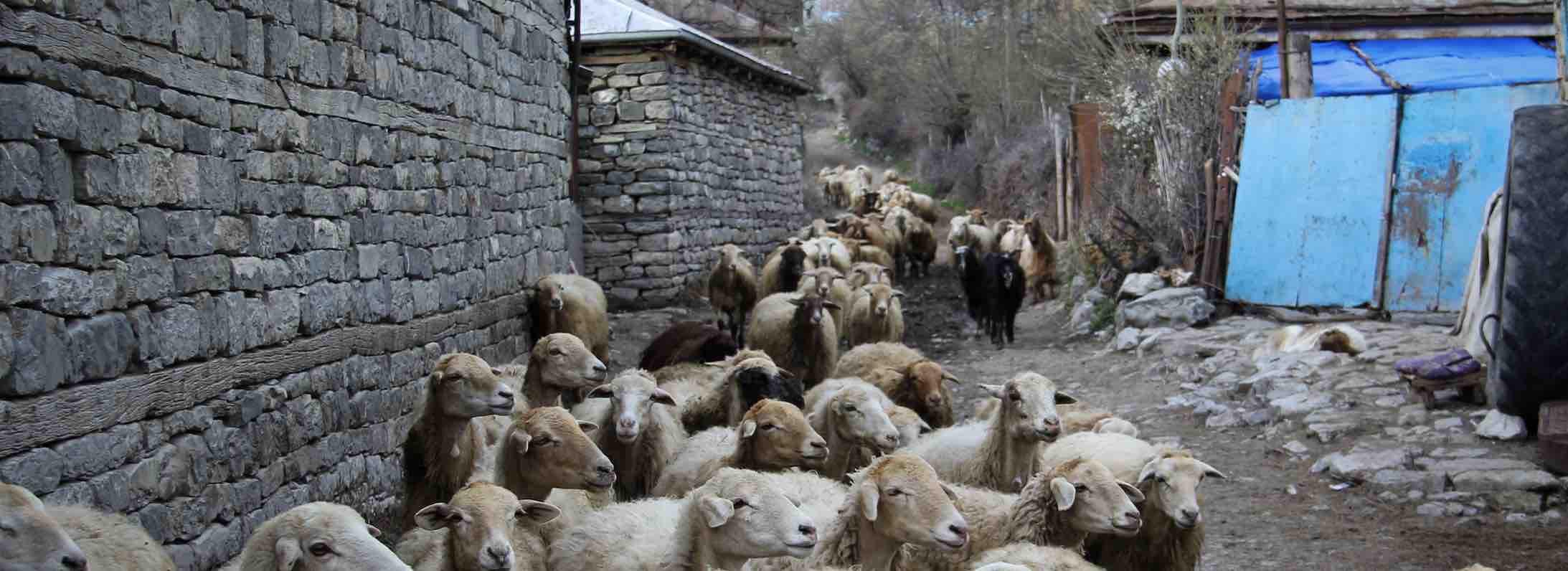
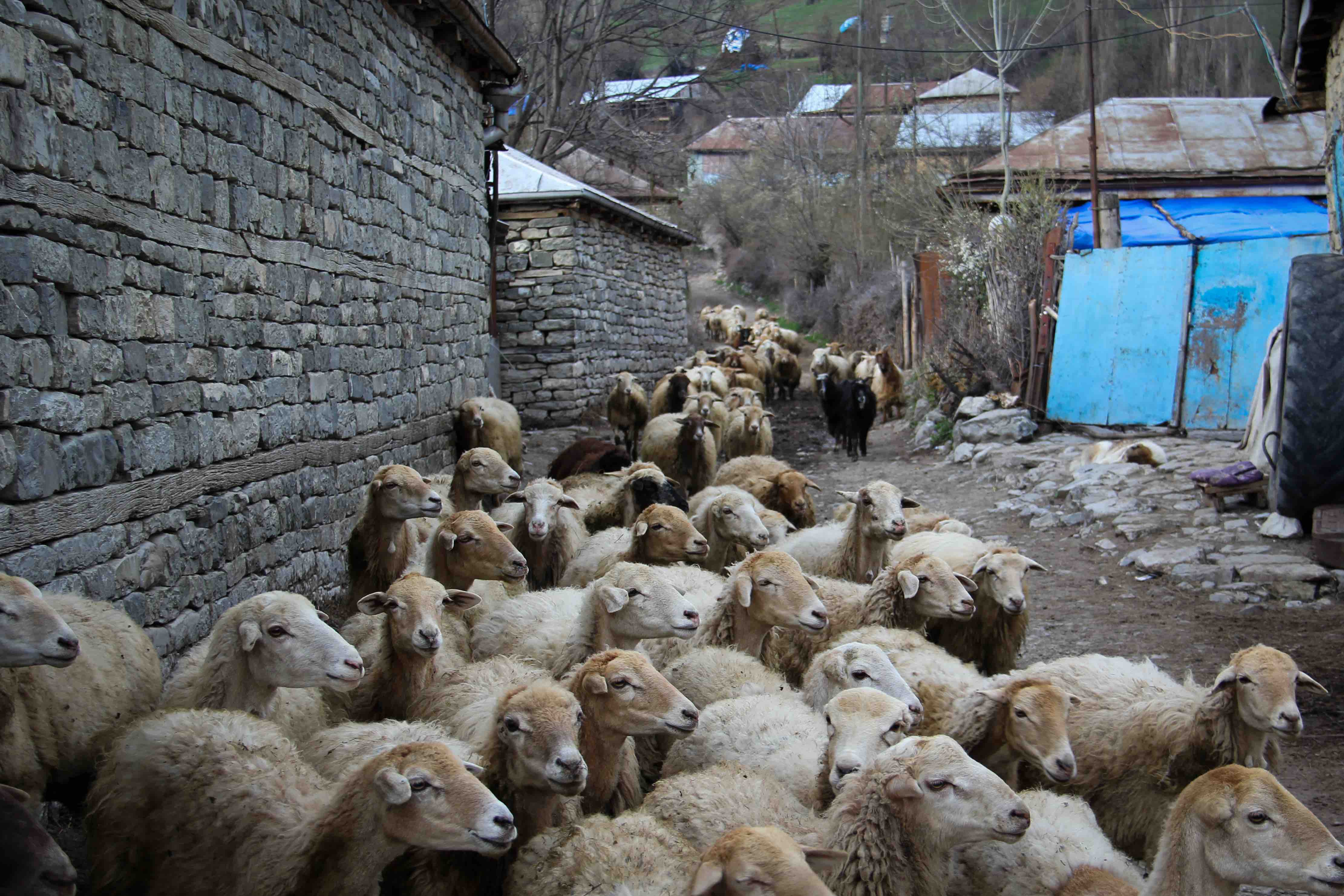
Enhancing Research and Policy Linkages to Advance National Adaptation Planning in Guinea
The project helped Guinea to increase its capacity to adapt to climate change impacts by strengthening linkages between research policy, mainstreaming climate change adaptation into sectoral and local planning and budgeting, and advancing national funding mechanisms and private sector engagement. The project addressed the main barriers that were identified during an earlier stocktaking exercise, including the lack of links between research and policymaking, weak measurement, evaluation and funding mechanisms, and insufficient private sector engagement in adaptation efforts.
The main objective of the project “Enhancing research and policy linkages to advance National Adaptation Planning in Guinea” was to increase Guinea’s adaptive capacity to cope with climate change impacts. The project established research to support informed decision-making and capture opportunities that arise both from public funding and the private sector.
Guinea is experiencing negative socio-economic impacts of climate change due to its exposure to sea level rise, droughts, and flooding. Its Nationally Determined Contribution (NDC), submitted in 2015 and revised in 2021, outlines climate change adaptation priorities, such as the preservation and restoration of water resources, protection of ecosystems particularly in coastal zones, and ensuring food security of rural communities.
Based on stakeholder consultations and stocktaking conducted in 2016 and 2018, the main barriers to climate change adaptation mainstreaming and financing were identified as (1) the absence of links connecting research to policy to inform decision-making processes; (2) weaknesses in and/or fragmentation of existing coordination, monitoring & evaluation (M&E), and funding mechanisms; (3) the absence of adaptation in the Planning-Programming-Budgeting-Monitoring and Evaluation (PPBSE) procedures; and (4) lack of private sector involvement in the adaptation landscape.
The project aims to remove these barriers by achieving the following objectives under the three main outcomes:
1. Research-policy linkages and knowledgebase are strengthened to inform adaptation planning and decision-making:
- Establish research-policy linkages to support the NAP (National Adaptation Plan) formulation and implementation;
- Develop a climate risks and vulnerability evidence base that informs the identification and prioritization of adaptation options in the sectors of agriculture, livestock, and forestry.
2. Climate change adaptation mainstreaming is facilitated by reinforcing coordination and M&E mechanisms:
- Operationalize a sustained and suitable coordination mechanism to support mid and long-term adaptation;
- Enhance adaptation mainstreaming into sectoral and local planning and budgeting;
- Establish adaptation M&E mechanisms in adherence with the existing national M&E system.
3. A national funding mechanism and private sector engagement are expanded to support adaptation financing:
- Support the Environmental Safeguard Fund (FSE) mechanism to raise awareness on funding sources and expand mandate for the financing of adaptation actions;
- Enhance the mining sector’s engagement on adaptation and climate financing.
Furthermore, a follow-up project was proposed to fill gaps identified through this phase and develop Guinea’s NAP document. The results of the current project have informed the proposal, consolidating existing climate risks and vulnerability assessments and prioritization of adaptation options in the priority sectors of agriculture, livestock, forestry, coastal and water resources. The planned second phase will further consider promoting sustainable cities, clean cities, and blue economy for which the national strategy is currently being developed.
In addition to the main project implementing partner, the Ministry of Environment, Water and Forests, other project partners included the Ministry of Economy and Finance (MEF), National Directorate of the Environment (DNE)/current National Directorate of Pollution, Nuisance and Climate Change (DNPNCC), sectoral Strategy and Development Offices (BSD), the various research institutes, the Center for Observation, Monitoring and Environmental Information (COSIE), the National Institute of Statistics (INS), the Fund for the Environment and Natural Capital (FECN), the Bauxite Environment Network (REB), Guinea-Ecology, civil society organizations and municipalities.
Project results
Activities under Outcome 1 led to the development and validation of key documents, including those for the Research-Policy Working Group (RPWG), Environmental Research and Climate Change Plan, and Updated Climate Projections Based on Appropriate Models (AR5 RCP). An interim report on vulnerability analysis in lower, middle, and upper Guinea was developed, and activities focused on setting up and running the RPWG team and prioritizing adaptation options in key sectors such as agriculture, livestock, forestry, and coastal and water resources. A Climate Risks and Vulnerability Assessment (CRVA) report was completed, including training modules used to train representatives from sectoral ministerial departments. This included strengthening the capacities of the national CRVA team to collect information on the impacts of climate change on key sectors in three of the four natural regions of Guinea. A workshop was conducted to prioritize adaptation options for key sectors.
Under Outcome 2, an operational manual was created for the National Committee on Climate Change (CNCC), featuring tools like a project monitoring tool, multi-year CNCC work plan, climate action monitoring system, management chart, and reporting system. A monitoring and evaluation framework for climate change adaptation, aligned with the national monitoring and evaluation system (DISE) of the National Plan for Economic and Social Development (PNDES), was established. Capacity-building sessions were conducted for government officials on integrating adaptation into the DISE. Additionally, studies focused on creating a sustainable coordination mechanism to support medium and long-term adaptation and updating climate models and projections, with corresponding training for managers. Data was collected and improved through a national stakeholder workshop. Furthermore, discussions with the National Institute of Statistics (INS) aimed to progress a partnership agreement for updating the statistical yearbook using the monitoring and evaluation framework. Technical guidelines were also developed to integrate climate change adaptation into sectoral planning and budgeting.
Outcome 3 focused on supporting the Environment and Natural Capital Fund (FECN) and the Bauxite Environment Network (REB). Discussions led to the finalization of terms of reference for activities, including conducting and validating a study on potential funding sources for the FECN and developing a strategic plan. The FECN mechanism was supported to raise awareness of funding sources and expand the mandate for financing adaptation actions. The project will also support the implementation of the REB 2024-2025 action plan to facilitate the private sector's commitment to adapting to climate change. Moreover, efforts were made to enhance the mining sector's engagement in adaptation and climate financing.
Outcome 1: Research-policy linkages and knowledge base are strengthened to inform adaptation planning and decision-making.
Outcome 2: Climate change adaptation mainstreaming is facilitated by reinforcing coordination and monitoring and evaluation mechanisms.
Outcome 3: A national funding mechanism and private sector engagement are expanded to increase climate change adaptation financing.
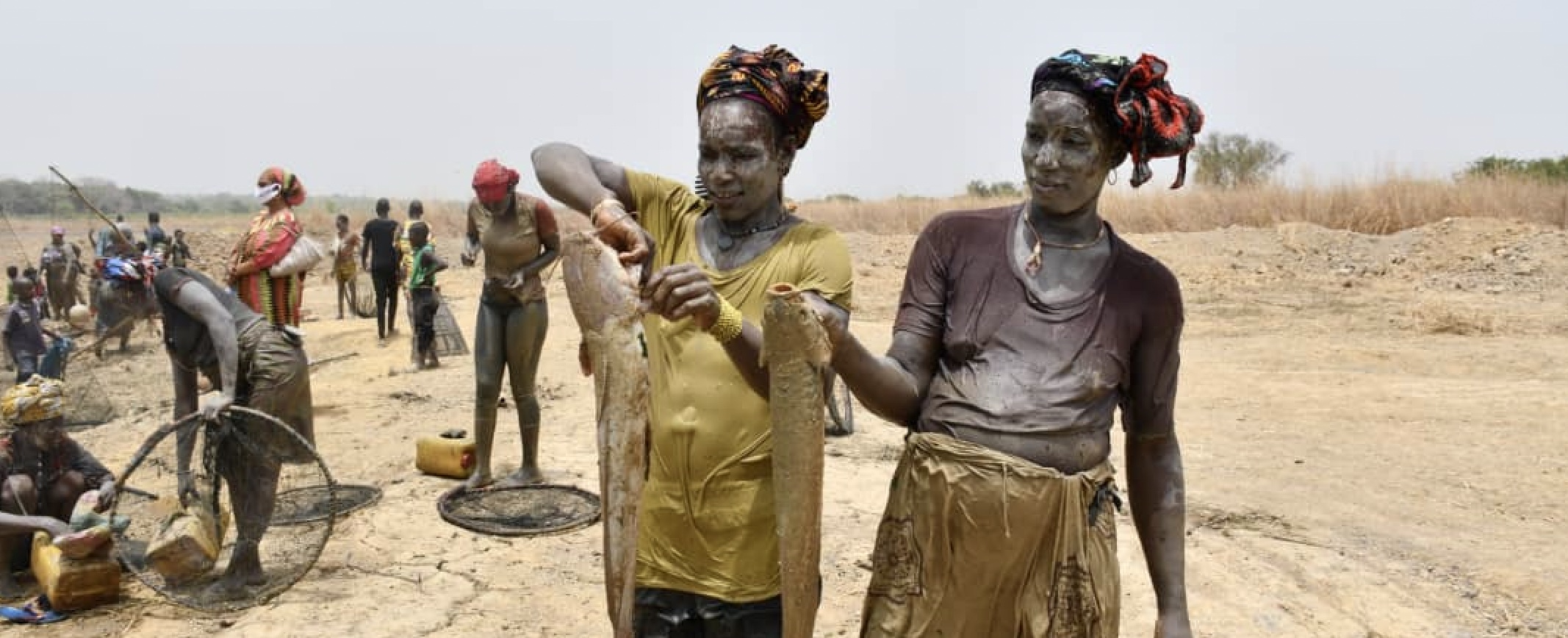
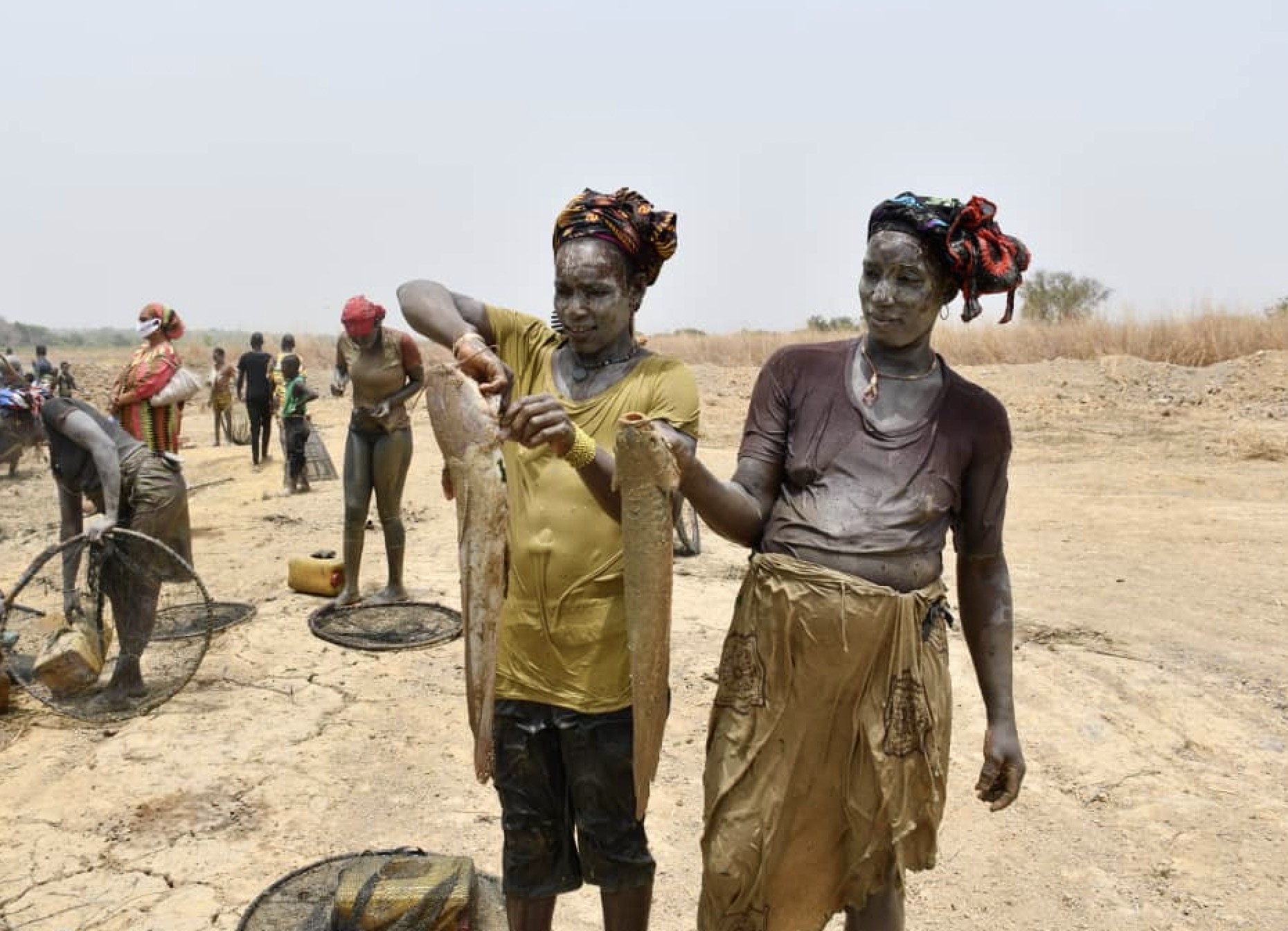
Integrating Climate Change Risks into National Development Planning Processes in Haiti
The project sought to strengthen institutional and technical capacities in Haiti to iteratively develop a National Adaptation Plan (NAP). Additionally, it aimed to integrate climate change adaptation into national and sub-national coordination, planning, and budgeting processes. This objective was achieved by advancing existing frameworks and systems, enhancing the capacities of various stakeholders to effectively contribute to the process, and establishing a mechanism to sustain the NAP process beyond this project.
Funded by the Green Climate Fund (GCF) Readiness Programme, the "Integrating climate change risks into national development planning processes in Haiti" project supported the Government of Haiti in strengthening institutional and technical capacities for iterative development of the National Adaptation Plan (NAP). This included integrating climate change adaptation into national planning and budgeting processes.
The project built on lessons from the National Adaptation Programme of Action (NAPA) implementation, as well as complementary activities currently underway in Haiti to avoid duplication of efforts. By integrating climate change adaptation into development plans, the project sought to align inclusive climate change adaptation priorities with the country’s visionary Strategic Development Plan (PSDH), National Land Use Plan (SNAT) and Disaster Risk Reduction Plan and Strategy.
As the only Least Developed Country (LDC) in the Caribbean region, Haiti’s primary economic sectors (i.e., agriculture, forestry, and fishing) are heavily affected by climatic events. As of 2023, nearly 59 percent of Haiti’s population lives below the poverty line, many of those people living in extreme poverty. According to the World Bank’s Climate Change Overview Country Summary (2022), political violence, economic imbalance, and population pressure have led to extreme environmental degradation in Haiti, with an estimated 98 percent of forests cleared for fuel. These destabilizing forces have left most Haitians extremely vulnerable to natural hazards.
Haiti has embarked on many initiatives to strengthen its resilience to climate change. However, fragmented policies and data, weak technical capacity, and inadequate climate financing, among others, have hampered the country’s efforts to plan effectively and iteratively for medium-to-long-term climate risks in its development planning and budgeting.
The project was informed by stakeholder consultations and stocktaking of existing initiatives, policies, and strategies in Haiti that were conducted by the National Adaptation Plan Global Support Programme in 2017, which resulted in an action plan to implement the NAP. The Stocktaking Report highlighted limitations and gaps, including insufficient technical and institutional capacity to effectively coordinate and implement climate change adaptation measures, scattered data and information-sharing on climate change impacts and adaptation interventions, limited capacity to monitor climate change adaptation and inform policies, and inadequate budget allocations. These served as the basis for the project activities that were later confirmed by stakeholders.
The project is expected to deliver the following results under the three key outcomes:
- Capacities of the Technical Working Group, particularly MDE (Ministry of Environment) and MCPE (Ministry of Planning), to steer the climate change coordination and integration process are developed;
- Institutional barriers to the integration of climate change into development planning and policies are reviewed and key stakeholders are sensitized to climate change adaptation and development linkages;
- Mechanisms for regularly updating and reviewing adaptation are strengthened and feed into the iterative adaptation planning process;
- Haiti's National Adaptation Plan is developed;
- A system for economic analysis and appraisal of adaptation options is established and adaptation priority interventions are integrated into the SNAT, PSDH and PNGRD;
- Universities and educational institutions are capacitated to support adaptation initiatives and the NAP process;
- Financing and Investment Strategy for the NAP is developed through a gender responsive consultative process;
- Private sector engagement in climate change adaptation is strengthened.
Project results
Despite socio-political challenges, the project advanced the NAP process in Haiti, focusing on enhancing national institutional capacities. The NAP was developed and validated by both the Ministry of Environment (MDE) and the Ministry of Planning (MCPE). The NAP document was presented at COP 27 in Egypt, the NAP Expo 2022 in Botswana, and at the launch of the National Committee on Climate Change (NCCC), providing platforms for experience-sharing and networking with potential partners. Subsequently, the NAP was published by UNFCCC in January 2023.
The project has produced strategic documents and tools, including a gender integration strategy, an exploratory report on private sector engagement in climate change adaptation, and a training mission for actors in planning and budgeting for adaptation. A NAP financing and investment strategy was developed through broad consultations with diverse stakeholders, including women’s organizations, while the communication strategy for the NAP process was validated and disseminated nationwide. An assessment of the regulatory framework and the vulnerabilities of priority sectors, such as health, agrobiodiversity, and water resources, was also conducted.
Other activities included technical working group meetings from sectorial ministries to strengthen capacity, ongoing training on climate information and adaptation integration, and stakeholder development planning and budgeting. Adaptation criteria were integrated into the Haiti Public Investment Program, while other efforts focused on incorporating SDG-aligned adaptation indicators into the national MRV system, creating new data layers with the Ministry of Environment, and organizing workshops on monitoring and evaluation, including a workshop on adaptation practices. Additionally, research programs for priority sectors with two Haitian universities were finalized.
Various initiatives aimed at revising strategic documents were supported, including the Nationally Determined Contributions (NDC), the development of an operational plan for the PNGRD and the reinforcement of the EIS-Haiti database for the monitoring of climate indicators, among others. Additional activities involved formulating addendums for the PSDH and SNAT, developing project concept notes, and promoting private sector participation in adaptation.
Several good practices and lessons learned from adaptation measures were compiled to promote successful approaches and were incorporated into the Environmental Information System platform. Moreover, collaboration with partners and stakeholders allowed the project to continue the implementation and validation of deliverables while developing synergies between climate change adaptation actions in the field.
Outcome 1: The coordination mechanism for multi-sectoral adaptation planning and implementation is strengthened at different levels
Outcome 2: The NAP is compiled with a strong evidence base for adaptation planning and priorities are integrated into the Strategic Development Plan and the Disaster Risk Reduction Plan and Strategy
Outcome 3: A financing framework for climate change adaptation action in the medium-to long-term is established.
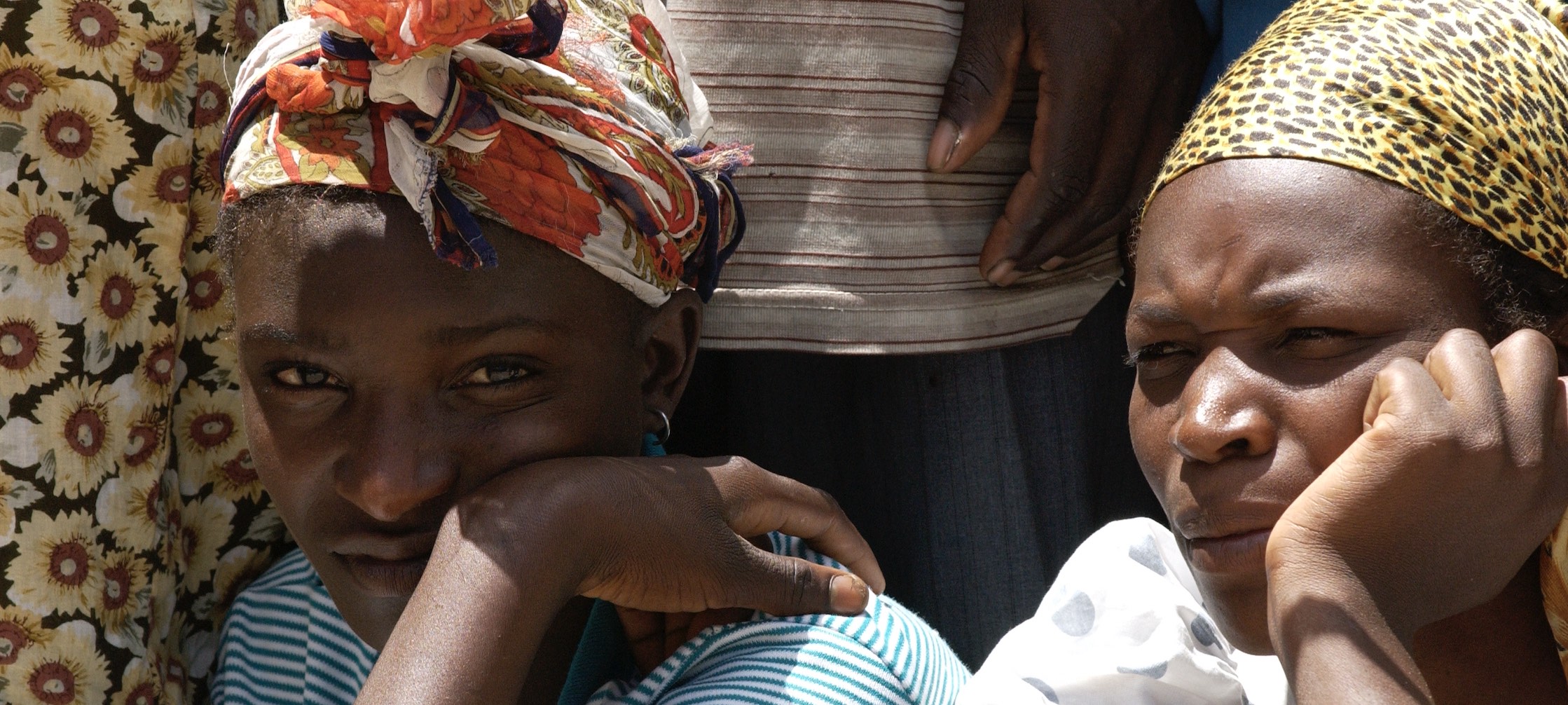
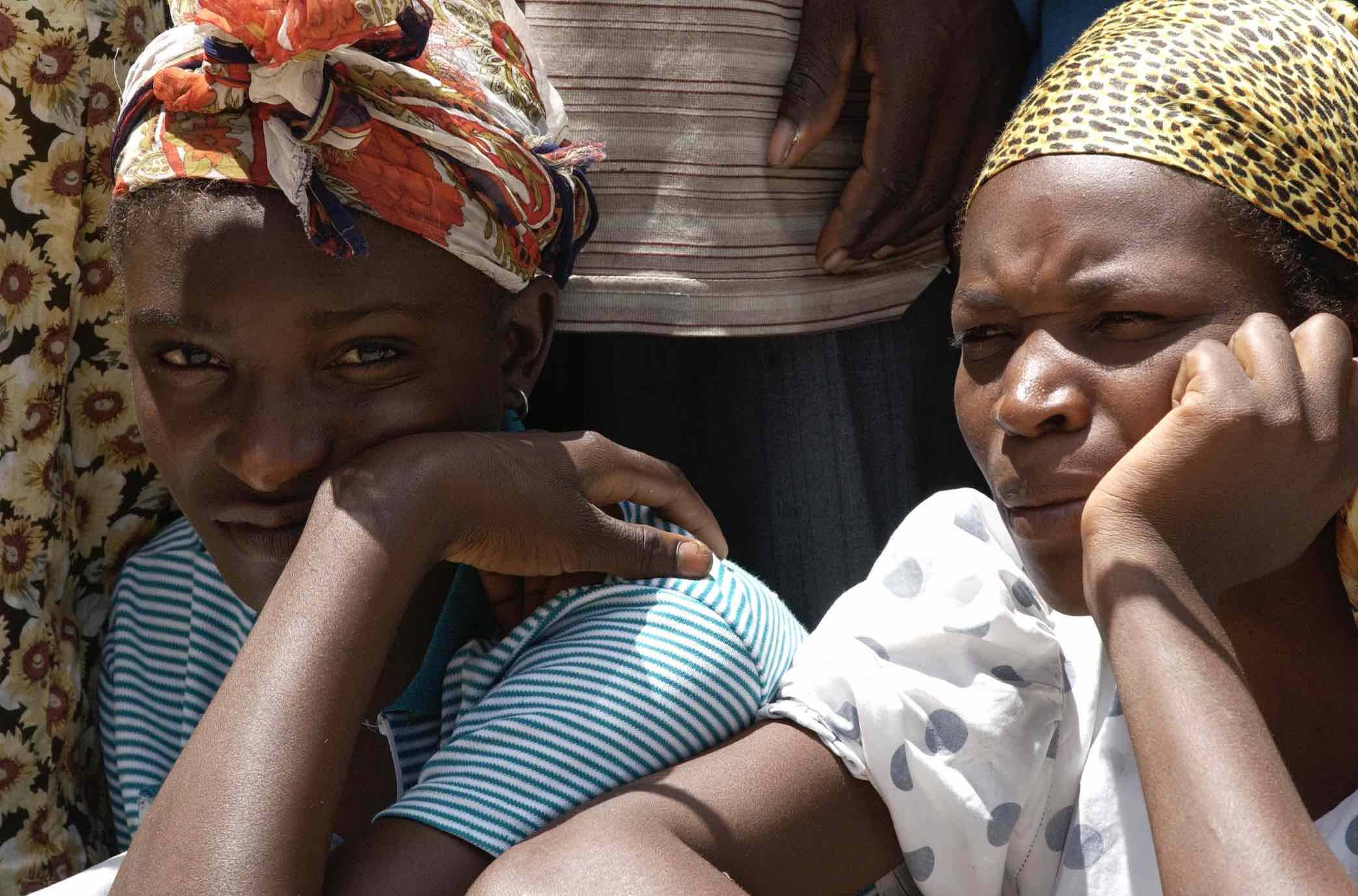
Supporting the foundations for sustainable adaptation planning and financing in Morocco
The project's goal is to support Morocco in creating a systematic framework for integrating adaptation needs into development planning. This involves establishing the foundations for sustainable finance and institutional frameworks for adaptation planning at both national and regional levels. Sub-national activities include developing regional adaptation plans for five regions: Souss Massa, Marrakech Safi, Béni Mellal-Khenifra, Draa Tafilalet and Oriental regions.
Given its geographical location, climate, and coastline, Morocco is highly vulnerable to climate change. The projected impacts by 2050 will significantly affect key productive sectors and infrastructures of the Moroccan economy. In 2022, Morocco suffered from a fourth consecutive year of low rainfall, facing a historic drought. With these structural vulnerabilities, the urgency of adaptation to climate change has become significant.
Morocco has undertaken numerous climate change adaptation and risk management projects, addressing specific issues such as water, agriculture, disaster risk, monitoring frameworks, data, and capacity building. However, these efforts have been implemented in isolation and in a fragmented manner, lacking a cohesive and interconnected approach. Moreover, climate change risks and adaptation needs have been excluded from development planning and investment decisions, particularly at the regional level.
Morocco started its national adaptation planning process in 2015 and developed a detailed NAP roadmap. Achieved in 2021, the NAP serves as a comprehensive medium- and long-term adaptation strategy, incorporating key actions and strategic objectives. The formulation of the NAP involved extensive consultations with key stakeholders and received formal endorsement from the Government.
The Moroccan Climate Change Policy and the NDC (updated in 2021) outline sectoral adaptation goals and targets and highlight critical cross-cutting pillars. The project builds upon the progress to date and helps operationalize the NAP, with a specific emphasis on the subnational level, by translating strategic objectives into tangible actions. Moreover, the project aligns with and complements other ongoing initiatives in Morocco related to adaptation and climate risk management.
In addition to the main project implementing partner, the Ministry of Energy Transition and Sustainable Development, the project works with partners in government, non-governmental organizations, and the private sector. The project seeks to create a framework for systematically integrating adaptation needs into Morocco's development planning, building upon the existing foundation for climate change adaptation. This framework will enable the implementation of high-impact adaptation measures building on strengthened institutional arrangements for adaptation planning, including strategic coherent planning instruments aligned with national priorities and sustainable sources of adaptation finance.
The project aims to design a framework for systematic integration of adaptation needs into the country’s development planning building upon the existing foundation for climate change adaptation. The expected results are grouped around the three main outcomes and include:
- setting up of coordination and governance structure for adaptation at the national and regional levels;
- strengthening national and regional M&E system;
- improving communication and awareness on adaptation planning;
- mainstreaming gender sensitivity into government’s planning processes;
- assessing climate risks and vulnerabilities for key sectors in three regions;
- identifying adaptation options, assessed and prioritized in the three selected regions;
- elaborating five regional adaptation plans;
- sustainable financing of regional adaptation plans;
- strengthened private sector engagement and investment potential.
Project updates
The project inception workshop was held in March 2022 with the participation of all project stakeholders.
Output 1.1. Regulatory text defining coordination structure and institutions mandate is in place.
A work plan and schedule for national and regional coordination bodies were created and approved, including the development of guidelines for climate information collection and for climate change risk and vulnerability assessments at the regional level for key sectors (water, agriculture, and infrastructure).
Output 1.2. National and regional Monitoring and Evaluation (M&E) system for adaptation developed.
Consultations were undertaken on building the M&E system, involving the development of climate change metrics and indicators linked to existing initiatives in Morocco. Activities have included analyzing existing systems, proposing scenarios for consolidating national platforms (MRV), drafting a guideline for gathering standardized climate information, including loss and damage data and socio-economic and gender-disaggregated data to feed into the M&E system, and assessing improvements for the Regional Information System on Environment and Sustainable Development (SIREDD).
Output 1.3. Communication and awareness to support effective adaptation planning improved.
A communication and awareness strategy was prepared and published in 2023, including the design of an adaptation repository website.
Output 1.4. Gender sensitivity is applied and addressed throughout the project life-span.
Stakeholder consultations were held in 2023, including a stocktaking of existing approaches and identifying good practices for gender integration into the project.
Output 2.1. Climate risks and vulnerabilities assessed in key sectors in 5 regions.
Consultations for mapping existing datasets and metrics were launched in 2023, accompanied by consultations for establishing guidelines and methodologies for regional-level climate change risk and vulnerability assessments in key sectors.
Output 2.2. Adaptation measures identified, assessed, and prioritized in the 5 selected.
Adaptation measures have been identified, assessed, and prioritized in five selected regions (Souss Massa, Marrakech Safi, Béni Mellal-Khenifra, Draa Tafilalet, and Oriental). Consultations related to the elaboration of regional adaptation plans for the pilot regions were held in 2023.
Output 2.3. Five regional adaptation plans formulated and integration with regional development and land-use plans facilitated.
The updated territorial climate plans (PCTs) adaptation chapter for the five pilot regions is being developed, along with a guideline for integrating PCTs into regional development and planning. Two interregional dialogues with the pilot regions are being arranged.
Output 3.1. Sustainable financing of regional adaptation plans strengthened.
Efforts to bolster sustainable financing for regional adaptation plans are in progress through consultations and activities. This includes developing an indicative project pipeline and conducting pre-feasibility studies for key adaptation priorities in each region.
Output 3.2. The private sector is strongly engaged and, its capacity to support adaptation is further enhanced.
At the national level, the House of Representatives of the Kingdom of Morocco adopted on October 18, 2022, framework law No. 03.22 forming the Investment Charter. This framework law aims to "promote private investment” to reach the rate of two-thirds of total investment by 2035, following the recommendations included in the New Development Model. This legislative breakthrough is helping to promote private-sector engagement in adaptation.
A two-day national climate investment forum was held in 2023, targeting financial institutions and private equity funds to discuss opportunities and challenges in private investments for adaptation. An assessment of the status, barriers, and opportunities for private sector investment was also undertaken.
Output 3.3. The private sector´s investment potential in adaptation is further strengthened.
The private sector's investment potential in adaptation is being strengthened through activities such as analyzing the interest, feasibility, and costs for setting up business incubators and organizing an ‘Adaptation Innovation Competition’ to encourage innovation and entrepreneurship. Additionally, an analysis of the national catastrophic risk insurance program through a public-private partnership is being conducted.
Outcome 1: The institutional framework for adaptation planning is strengthened and awareness is enhanced at national and regional levels.
Outcome 2: Regional adaptation plans (Territorial Plans against Global Warming) formulated for five vulnerable regions in Morocco and integration into regional development and land use plans facilitated.
Outcome 3: The foundations for sustainable finance for adaptation are strengthened.


Advancing medium and long-term adaptation planning in the Republic of Serbia
The project builds on Serbia’s Nationally Determined Contributions (NDC) commitments to advance medium and long-term adaptation planning in the Republic of Serbia with a National Adaptation Plan (NAP), providing support for iterative improvements to the NDCs under the enhanced transparency framework requirements. The project aims to enable the Government of Serbia to build and strengthen capacities for mainstreaming climate change adaptation, produce actionable climate risk and vulnerability assessments, and implement effective methods, tools and information systems to better inform decision-making on climate risks. Project activities address the main barriers to the integration of climate change adaptation into national, sectorial, and local government planning and budgeting, as well as support the formulation of financing strategies and mechanisms for the scaling up of medium- and long-term adaptation.
The "Advancing medium and long-term adaptation planning in the Republic of Serbia" project aims to increase the country’s capacity to address its climate change vulnerabilities. The project is proposed in two phases and focuses particularly in the areas related to the agriculture-water management nexus, and the sectors of energy infrastructure, transport infrastructure and construction.
Climate change impacts are already evident in Serbia. The IPCC AR5 has identified southeastern Europe, where Serbia is located, among the most vulnerable regions in terms of exposure to the negative effects of climate change. Climate change is expected to have adverse effects on the intensity and frequency of floods and droughts, and on the quality and quantity of yields of major crops. Serbia’s recent history of floods and natural disasters has shown that rural low-income communities are particularly vulnerable to the impacts of climate change due to heightened water insecurity, increased health risks and reduced agricultural productivity.
The project builds on UNDP support to Serbia in February 2017 that resulted in a stocktaking report and a plan of action to advance the National Adaptation Plan (NAP) process, validated by representatives of key sectors and the Ministry of Environmental Protection. The stocktaking exercise highlighted the existing weaknesses and demonstrated the prevailing barriers to climate change adaptation and disaster risk reduction planning in Serbia. The results confirmed that to adequately address climate change vulnerabilities, Serbia must overcome its current information gaps, capacity weaknesses, as well as a general lack of awareness of climate change adaptation – both at the national and sub-national levels. The report further identified that climate change is not integrated into existing policies, or their associated budget priorities.
The overall goal of the project is to reduce climate change related risks throughout Serbia by strengthening institutional and technical capacities that support integrated climate change adaptation planning and programming. This will be achieved through three outputs and related sub-outcomes across two phases:
- In the first phase, the emphasis is given to the development and setting up of the national mandate and steering mechanism for long-term climate change adaptation and capacity building for effective development of the NAP implementation strategy. The first phase also focuses on improved management of the adaptation related knowledge and data, addressing institutional capacity gaps and needs in specific sub-sectors and at all levels of governance, establishing a system for effective monitoring and reporting on climate change adaptation measures and actions;
- Building on the results and achievements from the first phase, the second project phase will focus on capacity building for setting up a sustainable financing strategy to support medium- and long-term climate change adaptation. Both project phases will be accompanied by a NAP and adaptation engagement and communications plan and concrete measures at both national and local levels.
In addition to the implementing partner, the Ministry of Agriculture, Forestry and Water Management, other project partners include the Ministry of Environmental Protection, Ministries in charge of energy, infrastructure and construction, local self-governments, Standing Conference of Towns and Municipalities, Chambers of Commerce, civil society and others.
Project updates
- A draft National Adaptation Plan (NAP) developed;
- Introduction of a bylaw (of Law on Climate Change) that will regulate the implementation of the NAP for the country and the preparation of provincial plans;
- Introduction of an advanced university degree programme on adaptation;
- Priority adaptation interventions in all key sectors identified;
- An interactive/digital climate atlas for Serbia launched;
- “Analysis of available climate and socio-economic information” conducted, establishing the current state-of-play and steps to be undertaken to build and strengthen institutional capacities for climate change adaptation;
- “Institutional capacities for climate change adaptation” report conducted, providing an overview on existing capacities and capacity building needs at the national and local self-government levels;
- “Existing policy, regulatory and institutional framework” report conducted and recommendations on improvement of specific policy and regulatory measures for climate change adaptation prepared;
- Reports on the impacts of climate change on key economic sectors such as agriculture and water management nexus, energy sector, construction and roads infrastructure, forestry and health with recommended adaptation measures;
- Economic assessment of the damage and losses caused by climate change for local self-governments conducted;
- Recommendations for better integration of nature-based solutions into the revised NDCs for Serbia provided;
- Representatives of the line ministries and other authorities participated in trainings, online workshops and consultative meetings on climate change adaptation.
- A series of press workshops held on the topic of climate change in Serbia, involving more than 500 stakeholders, at national and local levels.
Outcome 1: National mandate and steering mechanism in place for long-term climate change adaptation
Outcome 2: NAP implementation strategy developed
Outcome 3: System to monitor progress on adaptation strengthened and financing strategy for medium- and long-term climate change adaptation established.
Webinar: “National adaptation plan (NAP) systematic and risk-shaped response to climate change” (2020)
Održan prvi Dijalog o prilagođavanju Srbije na klimatske promene (2021)
The first workshop for journalists on the topic of climate change in Serbia (2021)
Continuation of training on the topic of adaptation to climate change within the NAP project (2021)
The third training in a row on the topic of adaptation to climate change within the NAP project (2021)


Increased Resilience to Climate Change in Northern Ghana Through the Management of Water Resources and Diversification of Livelihoods
The main objective of the 'Increased Resilience to Climate Change in Northern Ghana Through the Management of Water Resources and Diversification of Livelihoods programme (2015-2022) was to enhance the resilience and adaptive capacity of rural livelihoods to climate impacts and risks on water resources in the northern region of Ghana. The objective was achieved through key results centered on the improvement of water access and also increase institutional capacity and coordination for integrated water management to support other uses of water resources especially for the diversification of livelihoods by rural communities.
The programme targeted the three regions in the northern part of Ghana: the Upper East, Upper West and Northern Regions. Compared to other regions of the country, these three northern regions have high degree of exposure to climate variability and change characterized by increasing temperatures and decreasing and erratic rainfall. These factors make the northern regions highly vulnerable to climate change and high priority regions for climate change adaptation.
ProDocs
ProDoc - Increased Resilience to Climate Change in Northern Ghana Through the Management of Water Resources and Diversification of Livelihoods
Communications Products
Project Brief - Increased Resilience to Climate Change in Northern Ghana Through the Management of Water Resources and Diversification of Livelihoods
Brochures, Posters, Communications Products
New Water Access Reduces Disease and Improves Livelihoods in Ghana
Water is recognized as a cross-cutting resource underlying the National Growth and Poverty Reduction Strategy of the Republic of Ghana and the National Water Policy with direct linkages to the realization of the Sustainable Development Goals.
The lack of potable water caused by extreme climate events such as droughts and floods, increases the exposure of people, especially women and children, to water-borne and other hygiene-related diseases such as diarrhoea, cholera. Besides household wellbeing, water plays a central role in many industrial activities. For example, hydropower generation, transportation services, tourism and the agricultural, livestock and fisheries sectors all depend on water resources. Rainwater harvesting serves as the major source of surface water for many rural communities during the rainy season. There is high agreement between national and regional analyses that vulnerability, especially to droughts, has geographical patterns and socioeconomic associations.
The country experienced severe drought in 1983. Since the late 1990s, floods have been increasingly frequent in the northern regions. Floods affected more than 300,000 people in 1999, 630,000 in 2007/08 and 140,000 in 2010, causing deaths, damaging farmlands, and destroying livelihoods. This resulted in severe hunger, which affected the poor and reduced gross domestic product for that year.
The most severe flood occurred in 2007, during which 630,000 people were affected, through losses of life and displacement, and extensive infrastructural damage and loss of crops. This phenomenon demonstrates the potential impact of climate change on Ghana’s development.
Under a changing climate, poor farmers are finding it difficult to predict the timing of rainy seasons. Consequently, it is becoming difficult manage climate risks to crop production. Failure in crop production is one of the key factors undermining food security . The World Food Programme’s (WFP) Comprehensive Food Security and Vulnerability Analysis (2009) found that 5% of the population or 1.2 million people are food insecure.
The bulk of the food insecure population is located in the northern regions: 34% in Upper West, 15% in Upper East, and 10% in Northern region. This is the equivalent of approximately 453,000 people. The three northern regions covered by this programme are the most vulnerable. Similarly, the adaptive capacity of these three regions is the lowest nationwide due to low socioeconomic development and the heavy dependence of local economies and livelihoods on rain-fed systems such as agriculture and forestry.
Decreasing annual rainfall and its increasingly erratic pattern, on the background of climate change, are adversely affecting rural livelihoods in northern Ghana and in particular agricultural and pastoral practices. Agriculture is a major driver of Ghana’s economy and employs close to 55 percent of the total labour force.
The proposed Programme will promote four types of adaptation intervention: 1. livelihood enhancement; 2. livelihood diversification; 3. ecosystem protection and enhancement; and 4. community-level water infrastructure planning. These approaches will build up financial, natural, physical and social capital of the communities. A conservative estimate gives a total of 60,000 people as direct beneficiaries of the project. The indirect number of beneficiaries comprise the entire population in the Volta River Basin, estimated to be 8.5 million as of 2010. The main indicator of vulnerability reduction will be changes in access to water and diversification of livelihood activities. Income generation will increase by 30 % in at least 50% of households in the communities.
The main adaptation benefits of the Programme are that it will be able to provide concrete inputs into water resource management planning in the northern region by ensuring that climate change concerns are taken into account. The Programme will be able to build and enhance the adaptive capacity of the ecological systems of water catchments to climate change, once the proposed measures are adopted and implemented.
This is expected to be the first showcase in the Ghana where climate concerns are taken into account and lessons learned will be replicated to other river basins of the country. The activities that will be implemented will include producing knowledge products that capture lessons learnt on management of water resources and diversification of livelihoods under climate change. The capacity to document traditional knowledge systems as well as methods for managing knowledge will be developed, as well as the engagement of community service organizations for knowledge transfer.
The main objective of the programme is to enhance the resilience and adaptive capacity of rural livelihoods to climate impacts and risks on water resources in the northern region of Ghana. The objective will be achieved through key results centered on the improvement of water access and also increase institutional capacity and coordination for integrated water management to support other uses of water resources especially for the diversification of livelihoods by rural communities.
There are three components, each with the following outcomes that will be delivered by the programme:
COMPONENT 1: WATER RESOURCE MANAGEMENT PLANNING
Outcome 1: Improved planning and management of water resources taking into account climate change impacts on surface and groundwater sources
COMPONENT 2: COMMUNITY LEVEL IMPLEMENTATION OF WATER RESOURCE MANAGEMENT ACTIVITIES
Outcome 2: Climate resilient management of water resources by communities in Northern Ghana
COMPONENT 3: DIVERSIFICATION OF LIVELIHOODS OF RURAL COMMUNITIES
Outcome 3: Enhanced diversification of livelihoods of communities in northern Ghana
'Water at the arm-reach of community healthcare delivery', UNDP Ghana, 29 June 2021
'Increasing water supplies in rural Ghana', UNDP Ghana, 28 March 2019
'Strengthening Resilience of Rural Women through Dry Season Farming in Ghana', 28 March 2019
'Northern Regions urged to embrace climate Adaptation Fund Project', Vibe Ghana, 17 February 2017
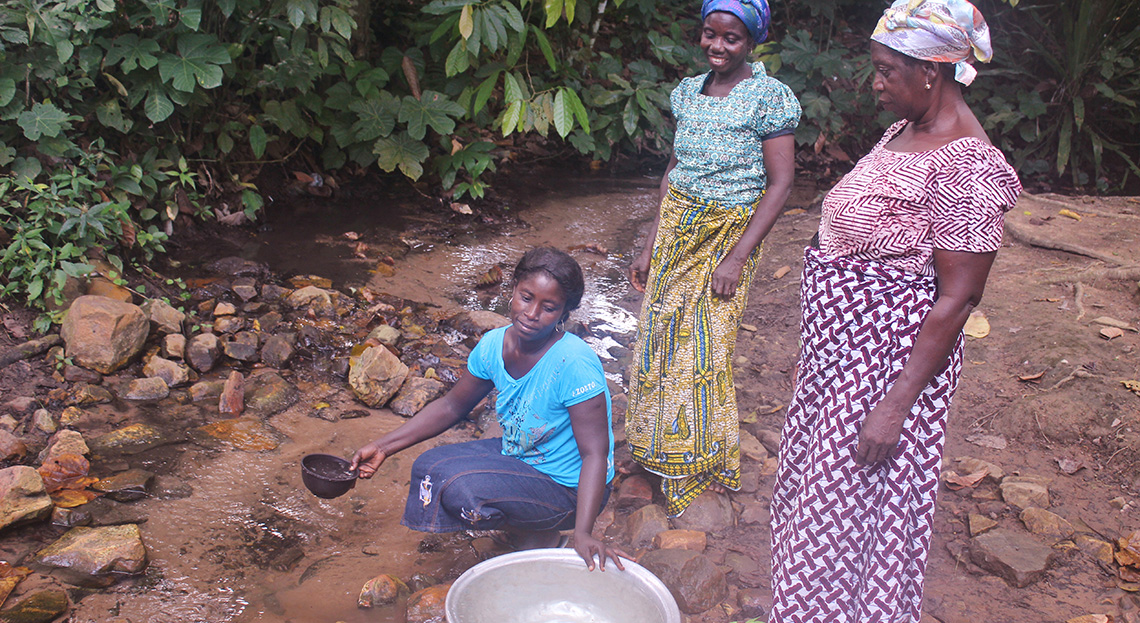
Outcome 1 - Improved planning and management of water resources taking into account climate change impacts on surface and groundwater sources
Outcome 2 - Climate resilient management of water resources by communities in Northern Ghana
Outcome 3 - Enhanced diversification of livelihoods of communities in northern Ghana
Building Resilient Communities, Wetland Ecosystems and Associated Catchments in Uganda
The impacts of climate change, coupled with other human and environmental stressors, is increasing degradation of wetlands and their associated ecosystem services in Uganda. This is negatively affecting the livelihoods of the people living in and around the wetlands – around 4,000,000 people. In fact, over 80% of the people living adjacent to wetland areas in Uganda directly use wetland resources for their household food security needs.
Given that wetlands are highly vulnerable to changes in the quantity and quality of their water supply, climate change will most likely substantially alter ecologically important attributes of wetlands and will exacerbate the impacts from human activity. On the other hand, the loss of wetlands could exacerbate the impact of climate change in as they provide fundamental services that contribute to mitigation of such impacts.
Implemented by Ministry of Water and Environment in partnership with Ministry of Agriculture Animal Industry and Fisheries and Uganda National Meteorological Authoritym, with funding from Green Climate Fund, United Nations Development Program (UNDP) and Government of Uganda, the 8-year project Building Resilient Communities, Wetland Ecosystems and Associated Catchments in Uganda (2017-2025) is addressing the management of critical wetlands affected by a changing climate.
While restoring wetlands and their ecosystem services, based on the wise-use principles and guidelines outlined by the Ramsar Convention on Wetlands, it is also supporting sustainable land management practices and reforestation, resilient agricultural practices and alternative livelihoods for communities living in these areas. This support will reduce the pressures on the wetlands. Finally the project is strengthening the climate information and early warning systems to support these communities to make climate-resilient decisions. Up to 800,000 people in 24 districts of East and Southwestern Uganda will directly benefit.
The project is currently in its 5th year of implementation. Achievements to date include:
- 38,941 ha of degraded wetlands restored;
- 6,655ha of degraded catchment rehabilitated and/or restored;
- An increase of 64% in agricultural income and livelihood among households;
- 38% of the population have access to improved climate information.
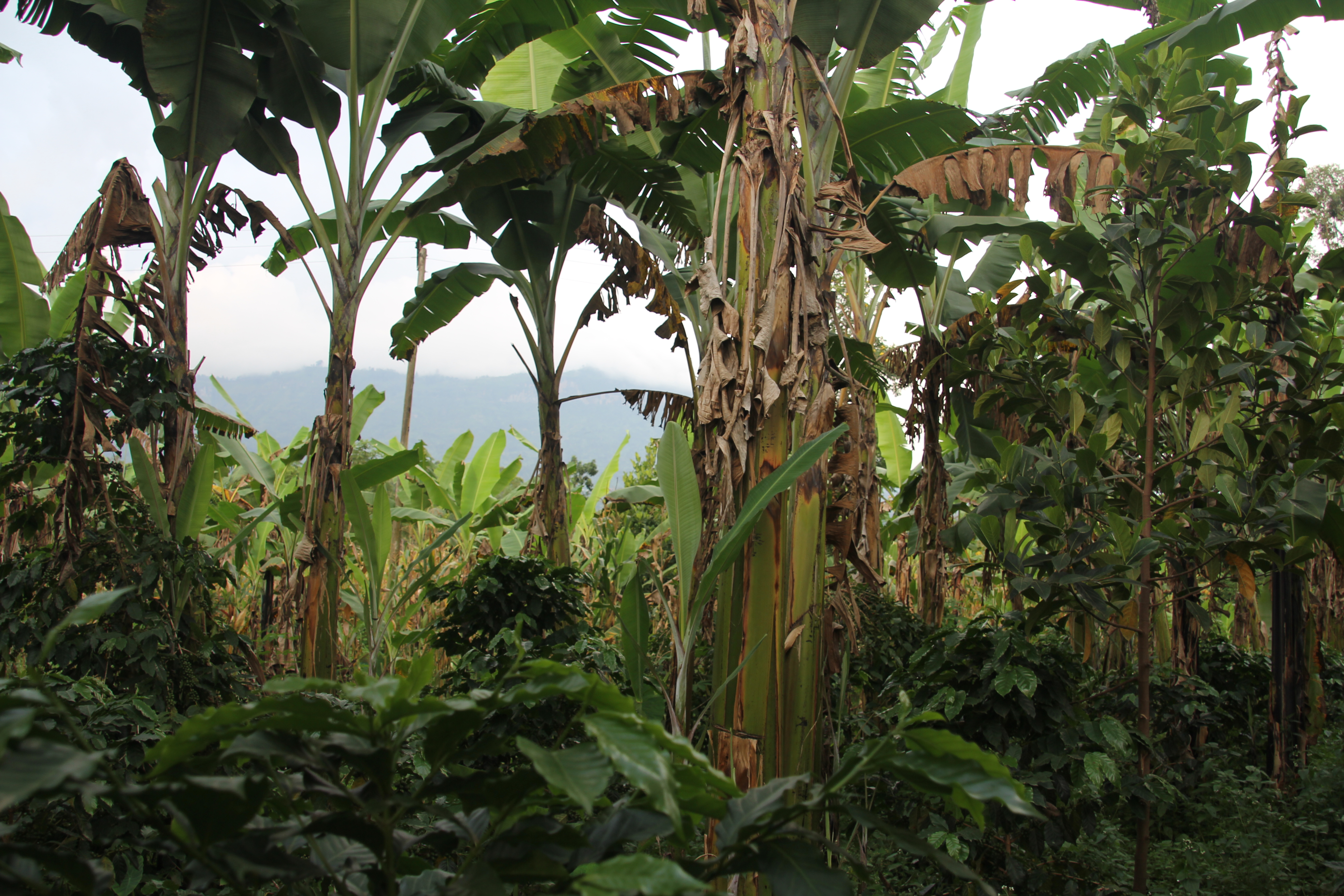

News article
News Article: New Vision (4 February 2019) - Rugunda Launches Wetlands project
News Article: Red Pepper (4 February 2019) - Govt Urges Ugandans to Support Restoration of Wetlands
ProDocs
Uganda, wetlands provide many important functions to the people, particularly in the context of food security. This is in addition to its role as a habitat for biodiversity that is also important for the economy. According to a recent 2013 study on the value of wetlands in Uganda, several market and non-market benefits are identified: “The market benefits include water for domestic use and watering of livestock, support to dry season agriculture, provision of handicrafts, building materials, and food resources such as fish, yams, vegetables, wild game, and medicine. The non-market benefits include flood control, purification of water, and maintenance of the water table, microclimate moderation, and storm protection. Wetlands also serve as habitats for important flora and fauna, have aesthetic and heritage values, and contain stocks of biodiversity of potentially high pharmaceutical value. Over 80% of the people living adjacent to wetland areas in Uganda directly use wetland resources for their household food security needs.” In addition to supporting food and water security, wetlands also support income generation and employment. “Of a total population of 34 million Ugandans, it is estimated that wetlands provide about 320,000 workers with direct employment and provide subsistence employment for over 2.4 million.”
Wetland health and resilience can easily be compromised by climate change impacts. Climate change models for Uganda predict that temperatures will continue to increase, and there will be changes in the seasonal distribution and amount of rainfalls, more frequent extreme weather events, and increases in the frequency of heavy rainfalls. Increases in temperature and erratic rainfall will result in more frequent and intense floods, droughts and heat waves, which will directly threaten wetlands and livelihoods that rely on its healthy ecosystem services. Hydrologic and drainage maps of the project targeted sites (the eastern and southwestern Wetlands Basin) indicate that most of the freshwater inflows pass through the wetlands and natural forests. These systems have played an integral role in maintaining the quality of water over the centuries. However, over the last three decades, climate change impacts, as well as other baseline (non-climate) issues such as excessive sedimentation and non-native species invasions, have resulted in substantial water quality deterioration.
Output 1: Restoration and management of wetland hydrology and associated forests
Under this sub-component, at least 760 km2 of degraded wetlands and its associated catchment will be restored and the lives of 500,000 people will be improved in selected districts of Eastern and South Western Uganda. The overall aim of the intervention is to restore the ecological and hydrological integrity of the wetland and support the development and implementation of a community-based framework for wetland management plans. This will help support climate risk management and resilient livelihoods through enhanced ecosystems services in the area.
Output 2: Improved agricultural practices and alternative livelihood options in the wetland catchment
This output will target at least 150,000 farmers including those who currently do not have secure access to irrigation, land-poor farmers, women-headed households, and the landless, to build more climate-resilient livelihoods. Investments in small-scale rural infrastructure (shallow bore wells, drip irrigation, tilling tools) for agricultural purposes, especially on-farm water management infrastructure such as dams, canals, drip irrigation systems, as well as farming best practices and crop diversification will be implemented to realize high economic return given their coverage. In addition, the output will focus on technical skills training for employment in key economic sectors viable in wetland areas, such as tourism, health and construction. Most of the beneficiaries have very low levels of education and no skills that can help them find a job. Beneficiaries will be trained in specific skills with high employability potential (e.g. earth mover, driver, assistant nurse, reception clerk in hotels, desktop publishing).Output 3: Strengthening access to climate and early warning information to farmers and other target communities to support wetland management
Output 3: Strengthening access to climate and early warning information to farmers and other target communities to support wetland management
This output will focus on strengthening access to reliable climate-related information and scaling up advisories for farmers and other target communities in the two wetland target areas, to improve the adaptation capacity of the entire population in and around the wetlands – around 1 million people. This will include the expansion of networks that generate and process climate-related data into relevant information to the scale and location of local districts, villages or communities, as well as dissemination of climate-related information/services, advisories and early warnings to communities. A strong focus of this output will be on delivering actionable climate-related information to communities, taking the form of agro-met advisories for agriculture, as well as the dissemination channels for making information available to the “last mile.”
'To destroy Uganda, destroy wetlands -- Govt official', UNDP Uganda, February 2022
'Government of Uganda and UNDP launch implementation of a $44.26 million project to restore wetlands and build community resilience', ReliefWeb, 29 November 2017
'Uganda, UNDP Sign Landmark Financing Agreement to Restore Wetlands', Chimp Reports, 23 August 2017
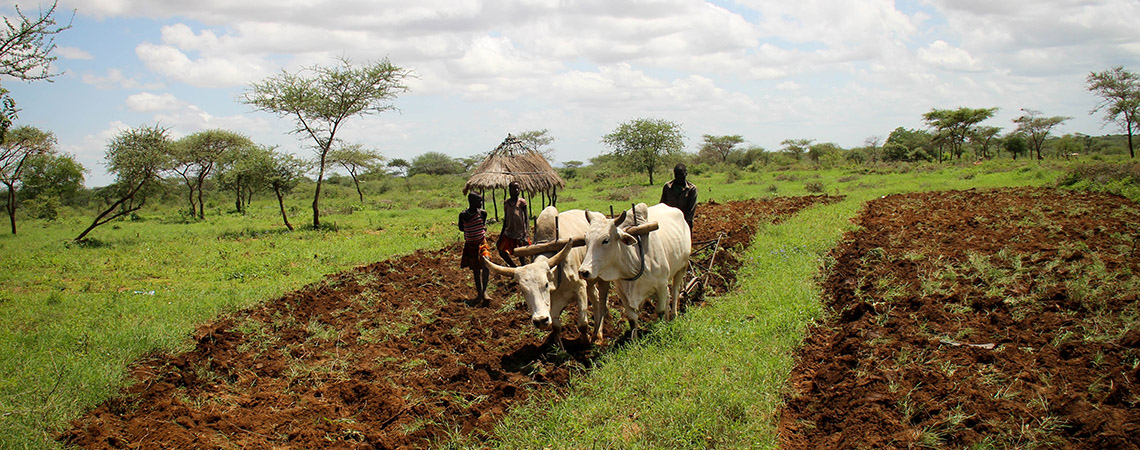
Output 1: Restoration and management of wetland hydrology and associated forests
Output 2: Improved agricultural practices and alternative livelihood options in the wetland catchment
Output 3: Strengthening access to climate and early warning information to farmers and other target communities to support wetland management
Tuvalu Coastal Adaptation Project
Under the Tuvalu Coastal Adaptation Project (TCAP) the Government of Tuvalu is implementing measures to reduce the impacts of climate-induced sea level rise and intensifying storm events on key infrastructure.
Building on existing initiatives, and using a range of measures for coastal protection - including eco-system initiatives, beach nourishment, concrete and rock revetments, and sea walls - the project focuses on building coastal resilience in three of Tuvalu’s nine inhabited islands. A total of 2,780m of high-value vulnerable coastline, with houses, schools and hospitals, will be protected from increasingly intensive wave action and coastal inundation.
Building national capacity for resilient coastal management is also a key focus of the seven-year project, set to be completed in May 2024.
It is expected that the project will help to catalyse additional coastal adaptation finance from other donors.
Visit the project website https://tcap.tv
PIFs
Tuvalu is the fourth smallest nation in the world, comprising nine inhabited islands with a population of 10,640. With an average elevation of only 1.83 meters, it is one of the most vulnerable countries in the world to the impacts of climate change. The combination of two manifestations of climate change – continually intensifying cyclone events and sea level rise – threaten to have dire impacts on Tuvalu. In 2015 Cyclone Pam displaced 45% of the population. The purpose of this project is to reduce the impact of increasingly intensive wave activity, through the compounding effects of sea-level rise and intensifying storm events, that is amplifying coastal inundation and erosion. It is evident and well accepted that the effects of climate change will only worsen coastal inundation and erosion in Tuvalu. This project will increase the coverage of coastal protection from the baseline 570m to 2,780m benefiting nearly 29% of the entire population. Investments on coastal protection are directed at coastlines in three islands (Funafuti, Nanumea and Nanumaga) along areas that have a high concentration of houses, schools, hospitals and other social and economic assets (henceforth referred to as “high-value” coastline).
Despite the extreme level of vulnerability, Tuvalu currently does not have a single engineered coastal protection infrastructure project that is designed to withstand current and future impacts of sea-level rise and intensifying tropical storms. The only exceptions are two interventions that are currently being designed for a length of 570 m in Funafuti and Nukufetau. The combined factors of high upfront investments required for coastal protection, the public good and non-revenue nature of the required solutions, and the inability of the Government to service loans, have permitted the Government and the community to implement the recognized solutions only at a slow pace and in a highly fragmented manner in the past. Because available resources are generally far smaller than what is required for implementing appropriate response measures, the past initiatives have often resorted to community-scale interventions that hardly withstand the current wave energy, let alone integrating climate change risks into the design. Without support, this sub-optimal practice is likely to continue for the foreseeable future. This project is proposed so that Tuvalu can, finally, take comprehensive and systemic steps to manage coastal inundation risks.
Output 1: Strengthening of institutions, human resources, awareness and knowledge for resilient coastal management.
- Technical capacity, knowledge and awareness strengthened for monitoring, protection and maintenance of coastal protection infrastructure.
The jurisdiction of coastal protection is shared across the Department of Lands and Survey (DoLS), Public Works Department (PWD) and Department of Environment (DoE). However, none of these departments currently have the technical capacity to monitor the dynamic processes of coastal change over time nor the capacity to design potential coastal interventions. Nor is there sufficient capacity within the Climate Change Policy Unit (CCPU) to coordinate the work of these departments for effective coastal protection. Due to this limitation, the Government is not able to carry out vulnerability assessments, site assessments and coastal design, make informed decisions about pragmatic solutions for coastal protection, and identify potential funding sources for implementation. Instead, they generally have to wait for a donor, often with particular areas of financing priority, to approach them. This lack of ability to carry out a preliminary technical assessment contributes to an increasing sense that the issue is out of their control and eventually to limited ownership. Further, although the CCPU was newly established in 2015 to coordinate government’s actions for climate change adaptation and mitigation, medium- to long-term capacity building efforts are needed in the technical areas of climate change, coordination, project design and management, financial management, knowledge management and reporting.
- Long-term national human resource capacity and awareness enhanced for sustainable coastal protection
In the specific context of Tuvalu, the capacity building support conventionally delivered in donor-supported projects has been insufficient to establish a foundation for sustainability. This is because typically the capacity building support in these projects is exclusively targeting the existing government staff, which is small in number, and the progress is immediately undone if the staff members leave the government system. This approach to capacity building represents numerous missed opportunities for transforming the country. Climate change adaptation is defined by UNFCCC as a series of “adjustments in ecological, social, or economic systems in response to actual or expected climatic stimuli and their effects or impacts” and by nature, it is an iterative, long-term process. Adaptation efforts in SIDS like Tuvalu must embrace, in their core principle, a strategy to build capacity of the entire country that goes well beyond that of the government system.
Output 2: Vulnerability of key coastal infrastructure including homes, schools, hospitals and other assets is reduced against wave induced damage.
- Coastal protection design, site-specific assessments and ESIA undertaken in all islands in a participatory manner
A detailed, participatory design and site-specific assessment will be carried out in all the islands in Tuvalu. This process is needed not only to make final adjustments in the design of the coastal protection measures (such as the angle of the structure and protection of the toe of the structure) to maximize the effectiveness and longevity of the structure for the three targeted islands, but also to equip the other, non-targeted islands, with the necessary information for attracting donor resources in the future, including from GCF. The multi-stakeholder, gender-responsive planning and design process will take place to ensure that beneficiaries are fully informed and are able to contribute to the detail design and functionality of the coastal protection measures in each of the islands. The process will, for example, look into how the target community (men, women, youth, and elderly) interacts with the ocean and coastline, which is an important design element of coastal protection infrastructure. The assessment will result in a set of adaptation options, detailed technical drawings, bill of quantity, tender documents and detailed costing of the interventions. As described earlier, this process will be used as an opportunity to provide hands-on trainings for government staff from the DLS, PWD and DoE.
Resources will be used to put in place a robust coastal protection infrastructure along 2,210m of vulnerable coastlines of Funafuti, Nanumea and Nanumaga to defend high value assets of the targeted islands. This translates to targeting nearly 28% of the high value zone of the country, which currently has no protective measures. Also this represents 10% of all vulnerable coastlines in the country. The design criteria are set such that the design will reflect the projected sea level rise and notional 200-year return period storm surge events. Geo-textile container revetments in Nanumea and Nanumaga will have minimum design life of 25 years; but, with the appropriate selection of vandal resistant bags for the top layer walls and, training of PWD and community members for monitoring and simple repair, the life expectancy is expected to be longer.
Output 3: A sustainable financing mechanism established for long-term adaptation efforts.
- All Island Strategic Plans and annual budgets integrate island-specific climate risks through gender sensitive, participatory processes
Successful climate risk mainstreaming into ISPs and effective use of available domestic financing will facilitate island-led actions, enhance planned and autonomous adaptation, and ultimately, increase resilience at the island level. In the context of coastal interventions envisaged in the GCF project, a strengthened ISP process will improve longer-term impact and replication potential of the GCF investments as domestic resources, allocated through ISPs, are expected to be used to maintain the GCF investments and to expand the coastal protection coverage. For the expansion of coastal protection measures beyond donor-assisted projects, lower-cost ecosystem-based approaches are a more realistic option given the limited available finance domestically. This activity will strengthen the critical foundation to facilitate this process.
- Capacity of Kaupules, Falekaupules and community members strengthened for monitoring coastal adaptation investments
This project will also be used to strengthen the capacity of both outer island administrations and community members for monitoring, reporting and verifying the progress of adaptation investments as an integral element of ISP support. Due to the special geographical condition of Tuvalu where islands are several days away from the central government, upward accountability to the central government and downward accountability to citizens can easily be diluted among kaupules. Thus, nurturing the sense of oversight among community members becomes critical for ensuring transparent, sustainable, demand-driven service delivery. Support to ISP formulation, budgeting and execution, the focus of Activity 3.1, and support for community members for an independent oversight of the ISP process, the focus of Activity 3.2, must go hand-in-hand. At the same time, outer island administrations also need to develop their capacity to report the use of resources and progress of investments to their constituents.
Project Update, October 2018
- With the concept designs already generated for the Nanumea, Nanumaga and Fogafale shorelines, the next step is to develop a detailed design with the help of an engineer. This will then be followed by a full assessment of hazards, environmental and social impact assessment, and coastal risk assessment before the implementation of innovative shoreline intervention measures appropriate to the location’s topographical and bathymetrical conditions.
- Under the TCAP’s scholarship programme, two Tuvaluan students, Palakua Sakaio and Tanu Sumeo have, in July of this year, commenced their studies at the University of Canterbury in Christchurch, New Zealand and the University of South Australia in Adelaide.
- The project is in the process of identifying the specific training and capacity needs of different Government agencies in Tuvalu with regards to their ability to address coastal adaptation and to ensure that the project meets the government’s requirements and there is maximum opportunity for capacity development during its implementation. This exercise will feed into a Strategy and Action Plan for Government Capacity Development which will be carried forward during the lifetime of the project. The technical capacities assessed are basically knowledge-based with direct links to the project. These include areas such as coastal hazards, coastal processes, coastal institutional arrangements, coastal interventions, project planning, coastal geospatial data, vulnerability assessment, concept designs, environmental & social impact assessments, risk assessment, coastal intervention construction, monitoring & maintenance, and adaptive management.
- To improve the ability of the Kaupules’ to address climate change and sea level rise risks and coastal adaptation, an operational manual has been developed to channel funds under the performance-based grants system to the Island’s Kaupules.
Funding Proposal approved by Green Climate Fund Board: 30 June 2016
Local Project Appraisal Committee meeting (LPAC): 15 February 2017
Funded Activity Agreement (FAA) effectiveness reached: 7 June 2017
Project Document signature between UNDP and Government: 14 June 2017
First disbursement received: 11 July 2017
Launch and inception workshop with key stakeholders: 30 August 2017
'Advanced Topographic and Bathymetric Survey to Support Tuvalu’s Adaptation Efforts', UNDP Pacific, April 24 2019. Detailed and accurate information on the relationship between land height and sea level will be made available for the first time in Tuvalu as the Tuvalu Coastal Adaptation Project (TCAP), funded by the Green Climate Fund (and implemented by the United Nations Development Programme, has signed a contract with Fugro to undertake an airborne LIDAR survey across Tuvalu’s nine atoll islands in the coming month. LIDAR (Light Detection and Ranging) is a remote sensing method that uses light in the form of a pulsed laser to measure ranges to the earth. See also Fugro release here.
SPC and UNDP partner to support coastal adaptation in Tuvalu - 20th December 2018
'Youths are the future of climate resilience', Fiji Times, February 11, 2018. As well as addressing the impacts and causes of climate change, we need to look to the solutions. How are communities going to, not just adapt, but build their resilience? What does resilience even mean? And how do we do it? One of the keys to building it, and addressing the impacts of climate change, is ensuring countries themselves are leading in both developing and implementing the solutions.
'Tuvalu scholarships awarded (under Tuvalu Coastal Adaptation Project)', Radio New Zealand, February 8, 2018. Two students from Tuvalu have been granted university scholarships under the Tuvalu Coastal Adaptation Project. Investing in young people is among the country's environmental adaptation plans. Moeo Finauga said the students would be offered jobs on the project once they had completed their studies.
'Shoring up Tuvalu's Climate Resilience', UNDP Asia Pacific blog, August 30 2017. As the Tuvalu Coastal Adapation Project launches, celebration in Funafuti. Regional Technical Advisor, Yusuke Taishi, shares his thoughts on the occasion.
'Tuvalu’s climate resilience shored up with launch of US$38.9 million adaptation project', UNDP Pacific, August 30, 2017. The Prime Minister of Tuvalu along with the United Nations Development Programme (UNDP) officially launch the Tuvalu Coastal Adaptation Project (TCAP) marking the start of an ambitious, large-scale push to protect the Pacific island nation from climate change.
'Tuvalu signs financing agreement to access Climate Fund' - Tuvalu Government, July 5 2017. Tuvalu has become the first Pacific Island country to sign the Financing Framework Agreement to access funds for coastal protection activities from the Green Climate Fund. The elated Prime Minister said the financing agreement, worth almost US$39 million will fund the Tuvalu Coastal Adaptation Project on the three islands of Nanumea, Nanumaga and Funafuti. The process will begin in August with a workshop where Tuvalu Government and UNDP will coordinate logistics.
'Government of Tuvalu launches new coastal protection project to bolster resilience to climate change' - UNDP, July 6, 2017. A signing ceremony took place in Suva on 14 June between the Tuvalu Prime Minister Enele Sopoaga and UNDP Resident Representative Osnat Lubrani. “The protection of our country’s vulnerable coastlines is an urgent priority of the Government of Tuvalu,” said the Prime Minister of Tuvalu, Hon. Enele Sosene Sopoaga.
'Green Climate Fund finance allocation builds Tuvalu’s resilience' - Green Climate Fund, July 3, 2017. The Green Climate Fund is transferring funds to help strengthen the island nation of Tuvalu against the double climate threats of rising sea levels and destructive cyclones. GCF is sending the first USD 2 million tranche of its USD 36 million contribution.
Tuvalu GCF-funded coastal adaptation project to protect 1/3 of country

Output 1: Strengthening of institutions, human resources, awareness and knowledge for resilient coastal management.
Output 2: Vulnerability of key coastal infrastructure including homes, schools, hospitals and other assets is reduced against wave induced damage.
Output 3: A sustainable financing mechanism established for long-term adaptation efforts.









